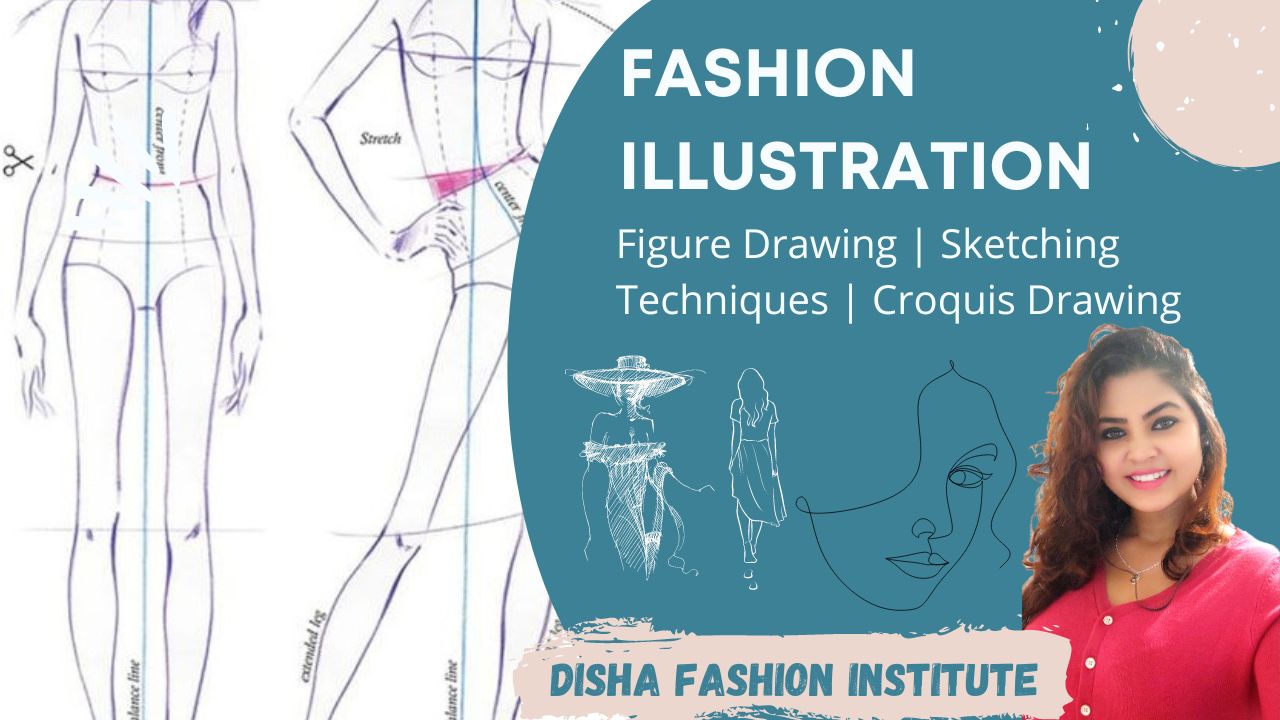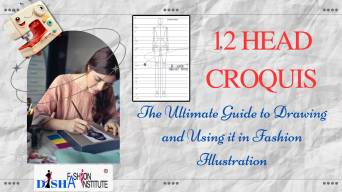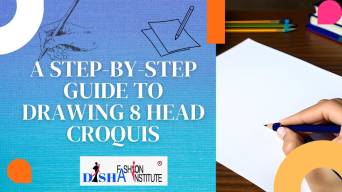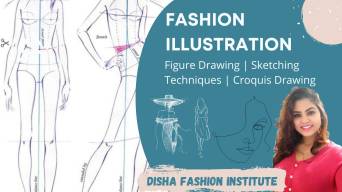Fashion illustration is a crucial part of the design process in the fashion industry. It allows designers to visually communicate their ideas, showcase garments, and express their creativity. Various sketching techniques are employed in fashion illustration, including croquis and live model drawing. Let's explore these techniques in more detail.
Table of Content
- Fashion Croquis: A Foundation for Fashion Illustration
- Capturing Realism: The Art of Live Model Drawing in Fashion Illustration
- Expressive Motion: The Power of Gesture Drawing in Fashion Illustration
- Elegant Shadows: Exploring Silhouettes in Fashion Design
- Unleashing Creativity: The World of Mixed Media in Fashion Illustration
- Conclusion
Fashion Croquis: A Foundation for Fashion Illustration

Fashion croquis, derived from the French word meaning "sketch" or "outline," is a fundamental element of fashion illustration. It encompasses a simplified figure drawing that acts as a base for designing garments. The primary purpose of a croquis is to provide a framework for showcasing fashion designs.
In the fashion industry, croquis templates are widely used as a starting point for sketching fashion designs. These templates offer a pre-drawn figure, typically in a neutral standing pose, which can be traced or used as a reference for drawing the desired clothing on top. Croquis templates save time and effort, providing a consistent foundation that allows designers to explore different designs without having to redraw the figure each time. In croquis sketches, the main focus is on the design ideas, not the small details. By keeping things simple, designers can let their creativity shine and capture the true essence of their designs without any distractions.
Fashion croquis come in various head-to-body proportions, and different types of croquis drawings are popular in the fashion industry. These croquis templates cater to different design preferences and requirements.
The most common croquis drawings include 8 head tall croquis, 9 head tall croquis, 10 head tall croquis, 12 head tall croquis, and 14 head tall croquis. These numbers refer to the number of times the height of the head fits into the overall height of the figure. For example, an 8 head tall croquis means that the height of the figure is divided into 8 equal parts, with each part being the height of the head.
The choice of croquis proportions depends on various factors such as the style of the fashion illustrator and the purpose of the design. Designers may opt for a longer croquis with more head divisions for a more stylized and exaggerated look, while others may prefer a shorter croquis with less head divisions for a more realistic representation of the human figure.
Sometimes, designers may even use croquis that go beyond 14 head tall, depending on the specific requirements of their designs or the artistic vision they want to convey. These croquis allow for even more elongation and creativity, resulting in unique and striking fashion illustrations.


No Absolute Fashion Figure Standard
There is no definitive standard for fashion figure proportions. The choice of head-to-body length ratio in fashion figure drawing depends on the style and purpose of the fashion illustrator or the market for which the fashion design is intended.
Throughout history, different artists have used varying proportions in their figure drawings. For instance, Leonardo da Vinci often employed figures that were 8 heads tall, while Michelangelo favored figures that were mostly 9 heads tall. In contrast, high fashion (Haute Couture) illustrations depicting top models can be and often are more exaggerated, with figures that are 10 to 16 heads tall. It is practically impossible to encompass the wide range of body types in terms of ethnicity, age, and natural anatomy with a single set of proportions.
Fashion drawings created for the product development process for the mass market need to be realistically or even naturalistically precise to provide concrete information for specifications. Therefore, figure drawings with proportions of 8 to 9 heads tall are more appropriate in such cases.
Capturing Realism: The Art of Live Model Drawing in Fashion Illustration
Live model drawing involves sketching a human figure, usually a model, in real-time. This technique allows fashion illustrators to capture the natural pose, proportions, and movements of the model, providing a more realistic representation of how the garments will look on a person. Live model drawing sessions provide an opportunity to observe the interplay of fabric, drapery, and body shape, which helps in understanding how designs will interact with the human form.
Expressive Motion: The Power of Gesture Drawing in Fashion Illustration
Gesture drawing involves capturing the essence and movement of a pose in a quick and spontaneous manner. It focuses on fluidity, energy, and capturing the overall gesture rather than detailed rendering. Gesture sketches are commonly used as a starting point for developing fashion illustrations. By quickly capturing the basic lines and proportions, fashion illustrators can establish the overall pose and dynamics of the figure before refining the details.
The best way to achieve movement is to separate the upper part of the torso from the lower, and pivot as indicated on the image below. As shown, the shoulder and bust lines will be slanted in a different direction from the waist and hips. In order to create a balanced figure it is important to drop a straight line from the base of the neck down to the bottom of the page. This is called the “balance line.” The supporting leg bears most of the figure's weight. It always comes from the higher hip and angles down towards the balance line.

Elegant Shadows: Exploring Silhouettes in Fashion Design
Silhouette sketching emphasizes the outline and overall shape of a garment. Basically it is the outline of a person, object, or scene which is represented as a solid shape mostly in black color. It is especially useful in the initial stages of the design process, allowing designers to experiment with different shapes and proportions without getting bogged down in intricate details. Silhouette sketches provide a clear visual representation of the garment's form and can be a helpful tool for exploring various design possibilities.
Unleashing Creativity: The World of Mixed Media in Fashion Illustration
Fashion illustration is not limited to pencil and paper. Many artists incorporate various mixed media techniques to add depth and texture to their illustrations. This can include using watercolors, markers, colored pencils, pastels, or digital tools. Mixed media techniques allow for experimentation with different colors, textures, and effects, enabling artists to create visually captivating and expressive fashion illustrations.
Conclusion
It's worth noting that while these techniques are commonly used in fashion illustration, every artist has their own unique style and approach. Fashion illustrators often develop their signature techniques and incorporate personal touches to create distinctive and captivating illustrations that reflect their individual artistic vision.







Add comment